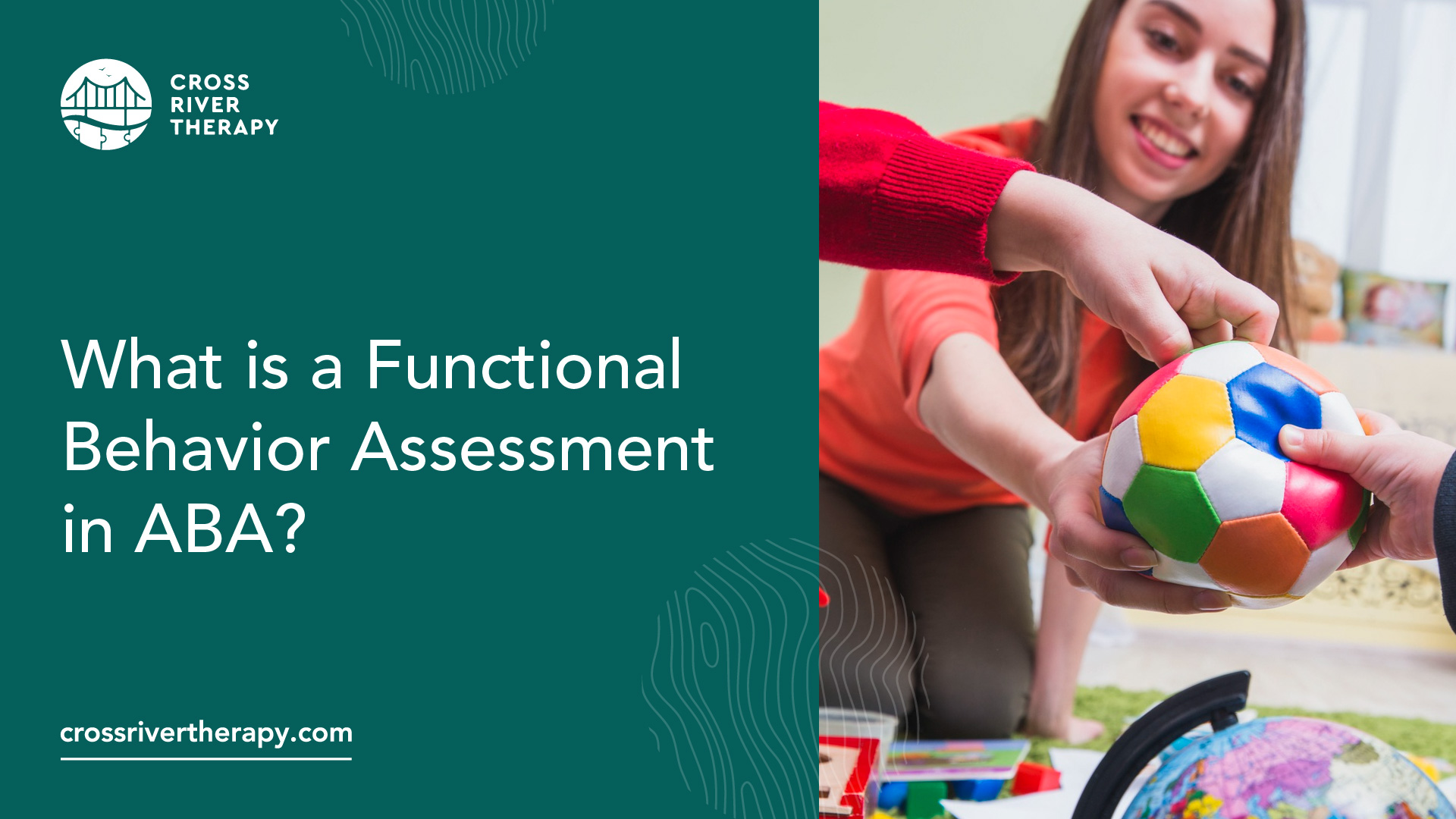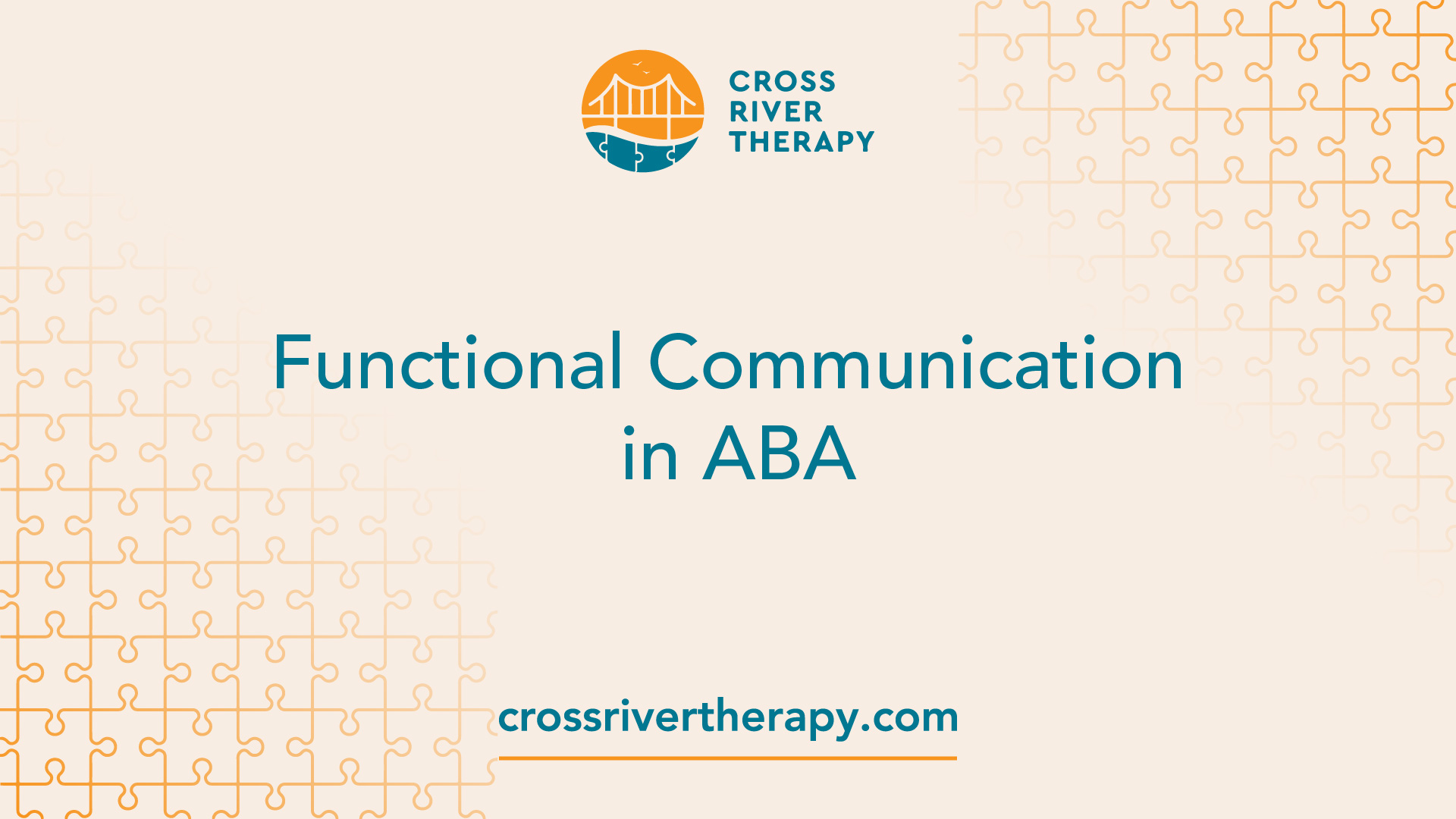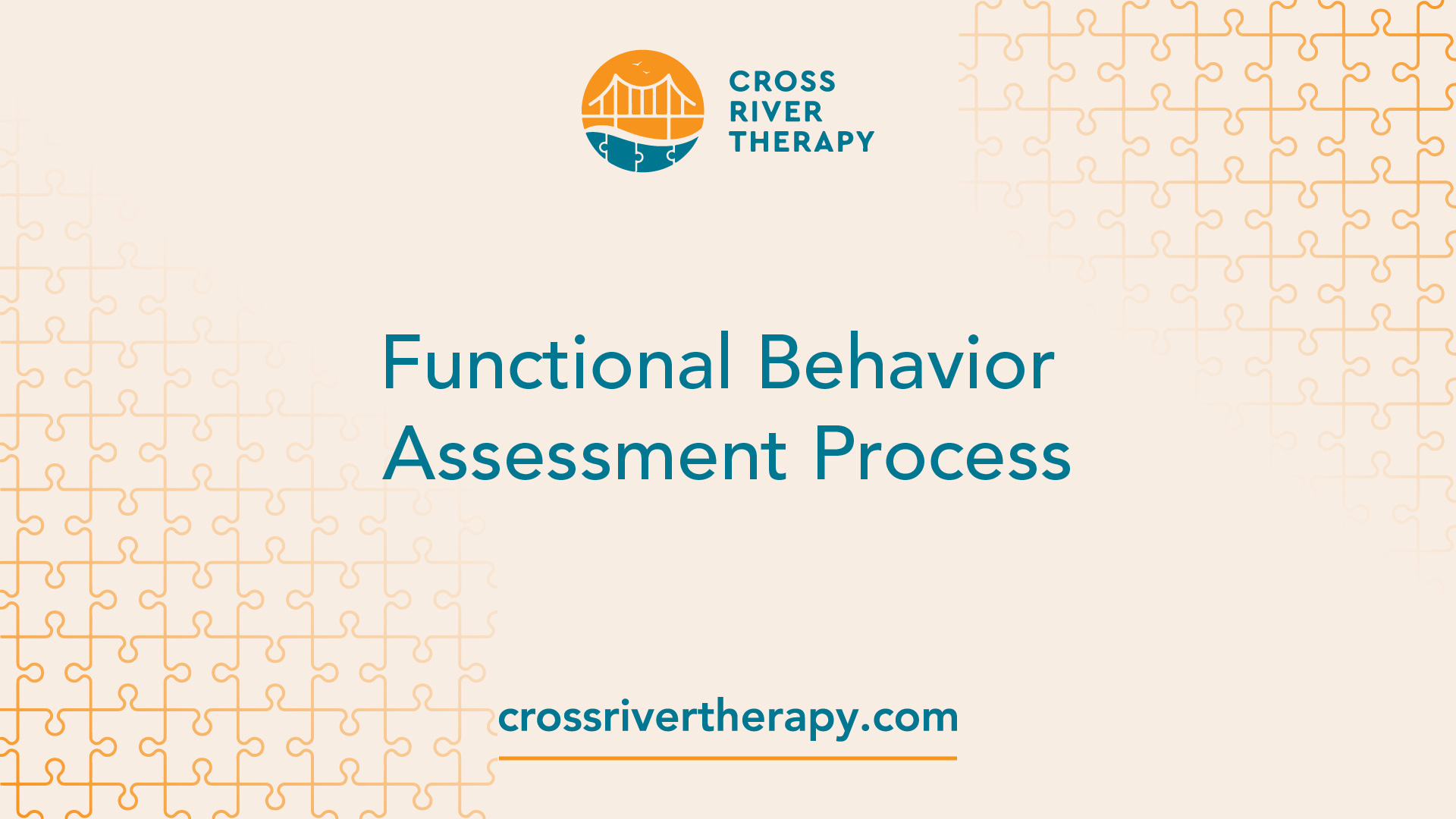What is a Functional Behavior Assessment in ABA?
Discover what is functional behavior assessment in ABA and how it unlocks behavior patterns in autism.
Understanding Functional Behavior Assessment
To understand the way individuals with Autism Spectrum Disorder (ASD) interact with their environment, Applied Behavior Analysis (ABA) utilizes a variety of techniques, one of the most critical being Functional Behavior Assessment (FBA).

Importance of Functional Assessment
Functional Behavioral Assessment (FBA) is a common strategy used in ABA to understand the purpose of behaviors impacting a child's development. It is considered an evidence-based practice and is effective in addressing behaviors in children with autism.
The main goal of an FBA is to identify problem behaviors, hypothesize their function, and guide treatment development. It helps to determine the function of a student's behavior and the factors that maintain it, aiding teachers in designing interventions to teach more acceptable behaviors. This strategy is particularly useful when basic classroom interventions are ineffective in addressing challenging behaviors.
Furthermore, FBAs are often part of multi-tiered systems of support, providing increasingly intensive and individualized levels of support for behavior, such as Positive Behavioral Interventions and Supports (PBIS) [2].
Methods of Behavior Analysis
There are three primary methods for determining function: indirect assessment, descriptive assessments, and functional analysis.
- Indirect Assessment: This method involves interviews, questionnaires, and rating scales to gather information about the behavior in question.
- Descriptive Assessment: This involves direct observation of the individual in their natural environment to identify potential triggers or consequences that influence the behavior.
- Functional Analysis: This method involves manipulating the environment to determine the impact on the behavior.
Each method serves as a piece of the puzzle in understanding the function of a behavior. The information gathered through these methods helps practitioners develop tailored interventions that address the underlying causes of the behavior.
Understanding Functional Behavior Assessment is the first step in unlocking behavior patterns in ABA. The importance of this process and the methods used to conduct it provide the foundation for effective interventions in functional behavior analysis. To learn more about Functional Behavior Assessment in ABA, refer to our articles on what is functional analysis of behavior? and what is behavior analysis in aba?.
Functional Communication in ABA
Functional communication is a cornerstone of Applied Behavior Analysis (ABA), playing a crucial role in enhancing the quality of life for individuals with autism spectrum disorder (ASD) Gold Star Rehab. Through it, they can express their needs, wants, feelings, and thoughts more effectively, thus reducing frustration and improving social interactions Gold Star Rehab.

Enhancing Communication Skills
ABA therapy, underpinned by Functional Behavior Assessments (FBAs), aims to identify the root cause of challenging behaviors in children with ASD Lumiere Child. The goal is to create a therapeutic approach that teaches appropriate alternative behaviors, such as crucial communication skills and coping methods.
Functional assessment methods used in ABA Therapy include Indirect Functional Assessments, Observational (Direct) Functional Assessments, and Functional Analysis Lumiere Child. These methods aim to understand the reasons behind challenging behaviors. For instance, the Indirect Functional Assessments involve gathering information from individuals who are familiar with the child's behaviors through methods like rating scales, questionnaires, and interviews Lumiere Child.
Here's an example of how an Indirect Functional Assessment method, like the Functional Analysis Screening Tool (FAST), could look:
Such assessments can provide valuable insights into why a child may be struggling with functional communication, thus informing the development of a tailored behavioral intervention plan. You can learn more about these methods in our article on what is functional analysis of behavior?.
Empowering Individuals with ASD
Functional communication goals focus on equipping individuals with ASD with the necessary skills to express themselves effectively. This includes teaching them how to use words, gestures, or alternative communication systems to express their needs and wants.
By improving functional communication skills, individuals with ASD can become more independent, participate more fully in social situations, and reduce frustration associated with being unable to express themselves effectively Gold Star Rehab.
These skills also empower individuals with ASD to participate more actively in their communities, enhancing their overall quality of life. For a deeper understanding of how ABA can be used to improve functional communication, feel free to explore our article on what is function aba?.
Functional Behavior Assessment Process
Understanding the process of functional behavior assessment is crucial to its effective implementation. Here, we'll delve into the steps involved in conducting an FBA and how it leads to the creation of individualized behavior intervention plans.

Steps for Conducting an FBA
A successful Functional Behavior Assessment (FBA) in ABA therapy involves several key steps, as outlined by Gold Star Rehab. The process starts by defining the target behavior, gathering and analyzing information, identifying the purpose of the behavior, and finally, creating a Behavior Intervention Plan (BIP) tailored to the individual's specific needs.
The components of an FBA include clearly and objectively defining the problem behavior, identifying antecedents (events that occur before the behavior), and analyzing consequences (events that follow the behavior) to understand why the behavior occurs.
Three primary methods commonly used to conduct an FBA are:
- Direct observation of the behavior
- Interviews with individuals involved (such as parents, caregivers, and teachers)
- Reviewing existing data and records
This approach ensures a holistic understanding of the behavior and its context.
Creating Behavior Intervention Plans
This step in the FBA process involves leveraging the data collected during the assessment to create a Behavior Intervention Plan (BIP). Behavior analysts analyze the data to identify patterns, trends, and relationships between the problem behavior and its antecedents and consequences. This analysis leads to the development of behavior support plans with targeted interventions to address the individual's specific needs [4].
The BIP is an integral part of the FBA process as it provides a structured plan to modify the individual's behavior. By understanding the reasons behind the problem behavior, the BIP can address the root causes and offer effective strategies for change.
These steps help in answering the question - "what is functional behavior assessment in aba?" To learn more about the functional behavior analysis, visit our article on functional behavior analysis.
Implementing Functional Behavior Assessment
Implementing a Functional Behavior Assessment (FBA) involves careful planning, execution, and follow-up to ensure that the intervention plan is effective and meets the individual's needs. The role of behavior analysts and the importance of tailoring interventions to individual needs are key aspects of this process.
Role of Behavior Analysts
Behavior analysts play a crucial role in the implementation of a Functional Behavior Assessment. After gathering data through various methods such as direct observation and interviews, they analyze the collected data to identify patterns, trends, and relationships between the problem behavior and its antecedents and consequences.
These trained professionals interpret the data objectively to understand why a student behaves a certain way. Their expertise is crucial in developing a hypothesis about the function of the behavior and testing it. If necessary, they may collect additional data to refine the hypothesis.
Subsequently, the behavior analysts develop an effective intervention plan based on their findings. They carefully monitor the implementation of the plan and make necessary adjustments to ensure its effectiveness. For more information on the role of behavior analysts, refer to our article on what is behavior analysis in aba?
Tailoring Interventions to Individual Needs
The primary goal of conducting an FBA is to develop an intervention plan that addresses the specific needs of the individual. By understanding the purpose of behaviors, behavior analysts can create intervention plans that target the individual's unique needs and abilities.
For instance, if the behavior is found to be a way of communicating needs or frustrations, the intervention plan may focus on enhancing communication skills. Similarly, if the behavior is a response to a certain trigger, the plan may include strategies for managing reactions to these triggers.
Furthermore, the intervention plan also aims to teach appropriate alternative behaviors. For children with Autism Spectrum Disorder (ASD), this could include learning coping skills and communication skills.
Ultimately, the key to a successful intervention is to tailor the plan to the individual's specific needs, taking into account their strengths, challenges, preferences, and environment. The functional behavior analysis process is a powerful tool in achieving this goal.
Data Collection in ABA
The process of Applied Behavior Analysis (ABA) involves repeated data collection to assess behavior change. This data collection method is tailored to unique goals, such as teaching new social skills or altering educational behaviors.
Importance of Data Collection
Data collection is a critical component of functional behavior analysis. It offers insights into when, where, and how often a behavior occurs, as well as its duration. A third party, ideally an objective observer, should collect this data, providing essential details for understanding why an individual behaves a certain way.
Moreover, baseline data, which is the level at which a behavior occurs before any intervention, is crucial for later comparison. This data is gathered at the beginning of an assessment period to evaluate the effectiveness of interventions.
Common ABA Data Collection Methods
There are seven common methods for data collection in ABA, each serving different purposes in understanding and analyzing behaviors (AccuPoint):
- Frequency/Event & Rate Recording
- Duration Recording
- Latency Recording
- ABC (Antecedent-Behavior-Consequence) Data
- Scatterplot Analysis
- Interval Recording
- Time Sampling
Among these methods, the ABC model is frequently used to identify the factors leading to a behavior, the behavior itself, and the consequences that follow. This model assists in comprehending the function of the behavior. Observers should note the setting, time of day, and persons involved when recording ABC events.
Data collection in ABA is an essential aspect of understanding and modifying behavior patterns. By choosing the appropriate data collection method, analysts can gain valuable insights and make informed decisions about intervention strategies. For more information on functional behavior analysis and its role in ABA, visit our page on what is functional analysis of behavior?.
Analyzing Behavior Patterns
An integral part of the Functional Behavior Assessment (FBA) process is analyzing behavior patterns. This analysis typically involves using the ABC model and collecting baseline data to understand the behavior and assess the effectiveness of interventions.
Utilizing ABC Model
The ABC model, standing for Antecedent, Behavior, and Consequence, is a tool used in FBA to identify the factors that lead to a behavior, the behavior itself, and the consequences that follow [5].
The 'Antecedent' refers to the event or environment that triggers the behavior. The 'Behavior' is the action or response of the individual. The 'Consequence' is what happens immediately after the behavior, which can either reinforce or discourage the behavior.
When conducting an ABC analysis, data should be collected over several sessions to identify patterns in antecedents, behaviors, and consequences. This helps develop a hypothesis about the function of the behavior, which is essential for designing effective interventions.
Baseline Data and Intervention Effectiveness
Baseline data, which is the level at which a behavior occurs before an intervention is implemented, is crucial for later comparative use. It is gathered at the beginning of an assessment period to assess the effectiveness of interventions.
Direct observations offer insight into when, where, and how often a behavior occurs, as well as how long it lasts. An objective observer should ideally collect the data.
Baseline data should be collected over three to five observational periods before implementing an intervention. This data is then compared to data collected after the intervention to determine the effectiveness of the intervention in modifying the behavior [5].
By utilizing the ABC model and collecting baseline data, behavior analysts can gain a comprehensive understanding of an individual's behavior patterns. This understanding enables them to design tailored interventions that effectively address the individual's specific needs, further highlighting the importance of FBA in applied behavior analysis. For a more in-depth look at the process, check out our article on what is functional behavior assessment in aba?.
References
[1]: https://www.goldstarrehab.com/parent-resources/functional-behavior-assessment-aba
[2]: https://iris.peabody.vanderbilt.edu/module/fba/cresource/q2/p04/
[3]: https://www.abcbehaviortx.com/single-post/functional-assessment-methods-in-aba
[4]: https://www.adinaaba.com/post/functional-behavior-assessment-aba
[5]: https://iris.peabody.vanderbilt.edu/module/fba/cresource/q2/p07/
[6]: https://www.lumierechild.com/blog/three-functional-assessment-methods/
[7]: https://accupointmed.com/measuring-behavior-seven-aba-data-collection-methods/



